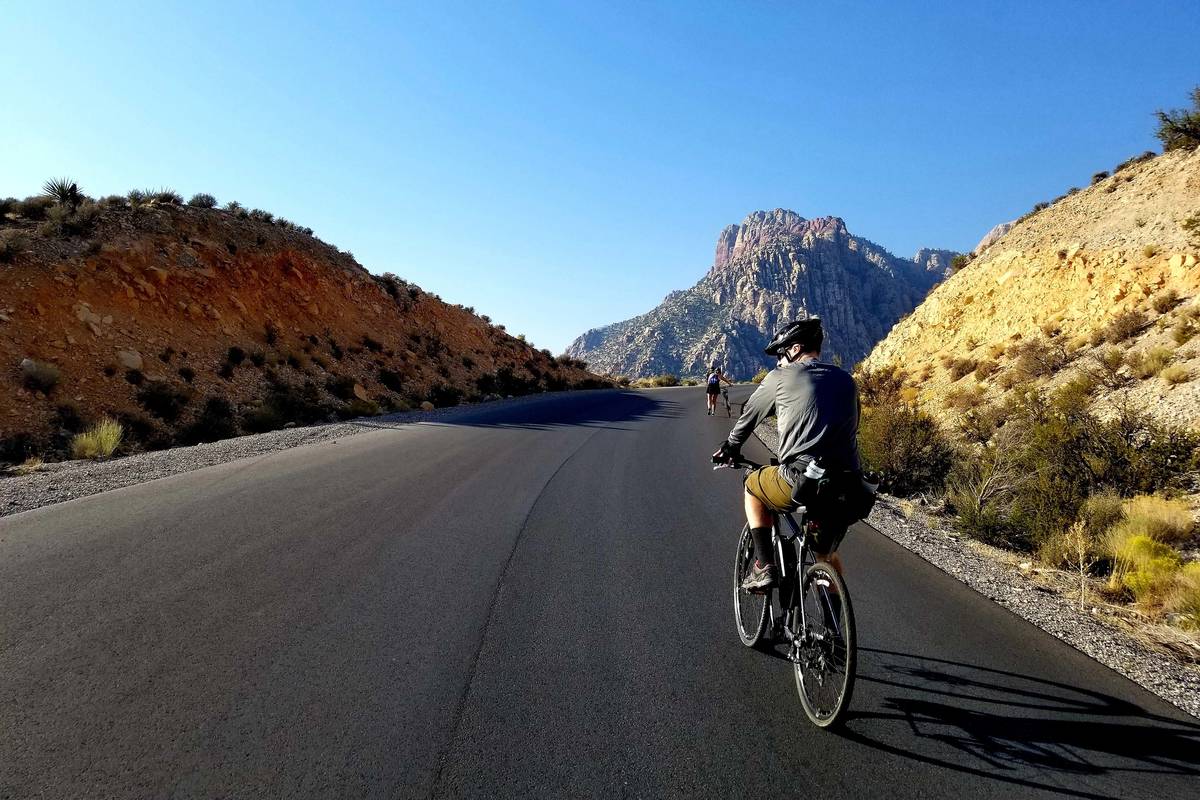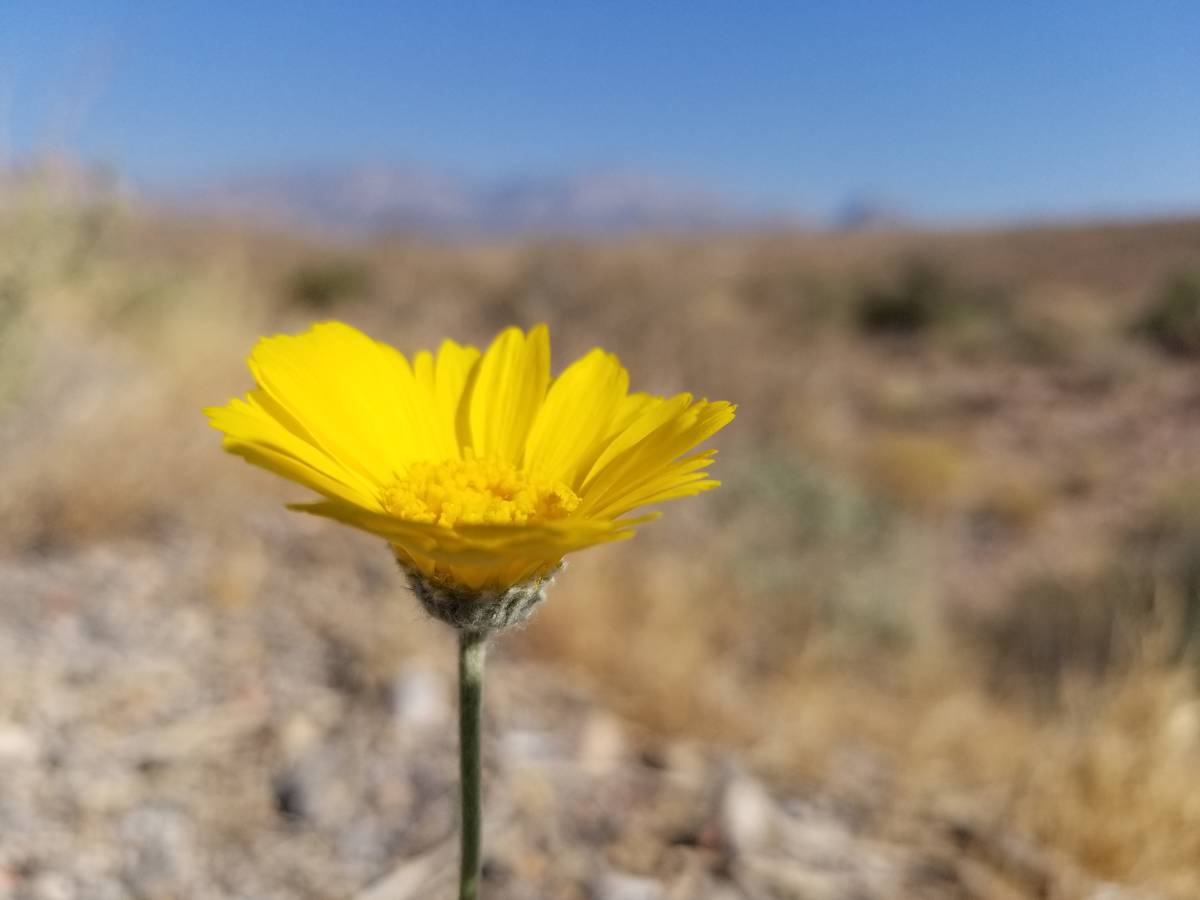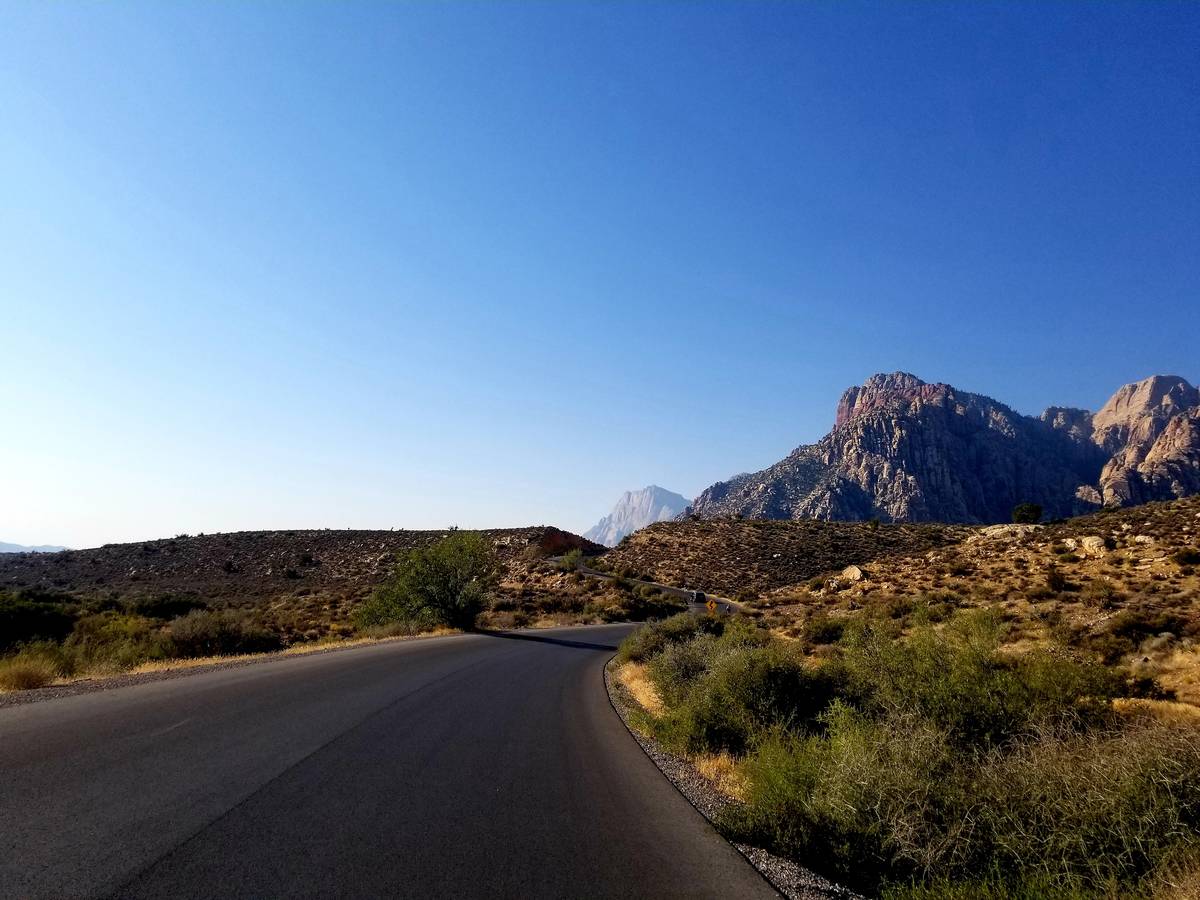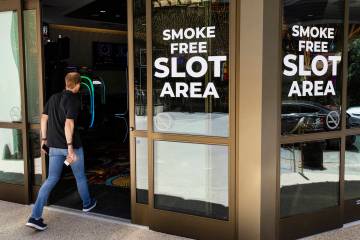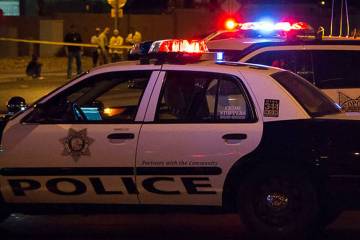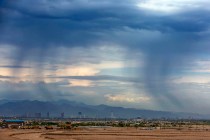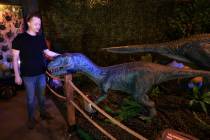Cycling provides intimate look at Red Rock Canyon
Little can compete with the big, sweeping sandstone picture of Red Rock Canyon National Conservation Area, unless it’s a close-up of a delicate desert flower blooming in spring because enough rain fell the previous fall. By car and by foot, these macro and micro views of a much-visited conservation area west of Las Vegas make powerful impressions.
But there’s another dimension for anyone wishing to gain deeper perspective and appreciation. It’s found on a standard bike for the strong or on a partially human-powered electric bike for those seeking adventure without as much work. In mid-September, I made a longtime wish to bike Red Rock’s 13-mile scenic drive come true with a little assistance from technology.
As my rental e-bike and its 750-watt motor helped push me uphill, I was able to focus on the geology and roadside beauty I had passed dozens of times — yet not quite seen in the same way. The pedal-assist, battery-powered bike could go up to 20 mph, but I mostly kept it around 12 mph and, with my new perspective, felt a more direct connection to a cherished place.
A sunrise ride
Our self-guided journey began in a Summerlin parking lot at sunrise, when my husband and I met with Laurent Carron, whose family owns EZRideLV and its fleet of 15 e-bikes. He made sure we had adequate biking skills and gave us tips on gear use before setting us off on state Route 159. From that point, we began pedaling about 4½ miles to the entrance station of Red Rock Canyon.
We wanted a 6:30 a.m. start time because of September’s lingering heat and my concerns about the busy weekend traffic on Route 159. Traffic was lighter, yet still nerve-wracking, in the bike lane. Despite my bicyclist-vs.-car stress, the panoramic views of the Spring Mountains were stunning.
As part of the $84 per-person rental fee (add $20 for sunrise timing), EZRideLV had slipped simplified Red Rock maps under plastic and within easy view on top of the bikes’ small cargo pouches, so riders know what to expect on the loop.
Also included in the price are helmets (we brought our own), bottles of water and granola bars. GPS devices on the bikes allow Carron to find and help riders in the uncommon event something goes wrong with the bikes, which have battery ranges of 35 to 40 miles.
The bikes’ carriers stored our water and snacks. In a small backpack, I hauled my camera, binoculars, notebook and America the Beautiful federal parks pass (otherwise admission is $5 for bicyclists, who won’t need to worry — as motorists will — about making Red Rock reservations this fall).
The actual inspiration of our adventure began once we got past the entrance station and started riding alongside Joshua trees and yuccas on the one-way Red Rock scenic drive. We spotted a local resident rock wren foraging for food during a stop at the first Calico Hills parking lot. Before that, a cactus wren had flown across the road, and that’s when I learned from a mistake made in the first mile: Don’t stop your e-bike to take a picture when you’re riding uphill because you might (and I did) end up temporarily walking the cycle until you can regain momentum.
On electric bikes, riders still pedal, while the bike’s motor and mechanics provide an extra push when needed. For instance, if you’re battling a lengthy incline and can barely muster the strength to go 5 mph on your own, the e-bike kicks in to supplement a rider’s efforts with an extra 3 mph for a total of 8. The technology makes going on longer or more challenging rides accessible and enjoyable.
Enjoying the view
I treasured my new perspective of Calico Hills and Sandstone Quarry on the way up to High Point Overview, but there were humbling moments when e-biking. I am in awe of cyclists who not only climb hills with their human strength but manage to laugh and chat at the same time.
We stopped briefly when we reached the scenic drive’s highest point, where we saw western bluebirds in flight and ground squirrels in perpetual motion. Then we headed down through the prettiest part of the scenic drive to Willow Springs picnic area to have a snack and peek at protected Native American pictographs of handprints in red paint high on a rock wall.
Our journey continued past Ice Box Canyon. For a few moments, it was just us, the road and sandstone beauty all around us. My bike’s speed reached 20 mph before we pulled over at Red Rock Wash Overlook, where my husband said he’d just seen two snakes (possibly striped whipsnakes) that I’d missed along the drive.
The morning’s final stop was in the parking lot for Pine Creek, always a must-do because of its spectacular views of the Spring Mountains and the sight of ponderosa pines lined up like soldiers along a prized water source for Red Rock critters big (burros, deer and bighorn sheep) and small (a hangout for so many birds).
Signs along Red Rock’s asphalt ribbon mark the miles between the entrance and exit, and we were running out of them. We made plans to call Carron to let him know we were about to make our way back to reality (5 more miles on busy Route 159), and I began secretly plotting our e-bike return in the spring, when the browns and tans of autumn will be replaced by green and vibrant desert blooms.
^
Natalie Burt, a former news reporter at the Review-Journal, has lived in Southern Nevada for 31 years and spends as much time as possible enjoying the outdoors here. Contact her at nvburt@gmail.com.
More information
Self-guided e-bike tours: EZRideLV.com
Group tours: Red E Bike Tours, redebike.com
Red Rock Canyon National Conservation Area: redrockcanyonlv.org, blm.gov/site-page/rrcnca



